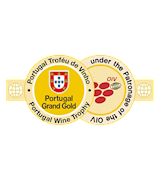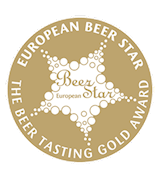TABLE OF CONTENTS
Best Slovak Foods
These rustic, crispy potato pancakes belong to the traditional Slovak cuisine. They consist of a thick batter made with grated potatoes, eggs, flour, and a variety of spices. Pan-fried for a short period of time until golden-brown in color, these filling snacks are usually enjoyed as the main course accompanied by various milk products, or as a side dish that is typically served alongside hearty Slovak stews.
Ovčí salašnícky údený syr is a uniquely shaped, soft cheese, handmade from unpasteurized sheep's milk in a traditional way in mountainous areas and shepherd's huts in the Slovak Republic. The word salašnícky refers to the word salaš - a shepherd's hut where it is produced.
The cheese is smoked over hardwood and comes in various shapes - most often as a lump, but it may come shaped like a heart, cockerel or other animals. On the exterior it is firm and dry with a crust and little stains that appear from the smoking process.
MAIN INGREDIENTS
Bryndzové halušky is a modest and simple meal consisting of three elements: halušky, bryndza, and bacon. Halušky is a traditional name for a type of dumpling made with grated raw potatoes and flour. The second essential ingredient in this dish is bryndza, a flavorful cheese made from sheep's milk, authentic to the Liptov area.
The original Slovak bryndza is salty, strong, crumbly, and light gray, while the mass-produced varieties are usually milder, lighter, and typically have a certain percentage of cow's cheese. Bryndza is added directly to halušky and mixed thoroughly until it melts.
MOST ICONIC Bryndzové halušky
View moreThese thin, crispy potato pancakes are traditional Slovak snacks that are usually enjoyed during the Christmas festivities and Lent. They are made with a soft potato dough which is rolled into flat circular shapes and dry-baked until crispy and golden.
Even though they are traditionally consumed as a savory snack filled with sauerkraut or minced meat, certain regional varieties are enjoyed as a sweet treat that is spread with fruit preserves and dusted with poppy seeds, sugar, and melted butter.
Krapfen was probably the first European-style doughnut to appear, followed by similar varieties in other countries. These pastries are traditionally prepared with leavened dough that is deep-fried until golden and crispy on the outside, while they remain soft, light, and airy on the inside.
Though krapfen can be prepared plain, they are most often filled or topped with jams, and vanilla or chocolate custards, while the top is usually dusted with powdered sugar or drizzled with chocolate. The origin of the word krapfen dates back to 9th century, and the recipes in German can be found as early as the 14th century.
MAIN INGREDIENTS
Halušky is the incredibly soft variety of potato dumplings, usually associated with Slovakia and the Czech Republic. The dough is created with grated raw potatoes and flour. They are typically cooked so the batter is spread on the wooden board, and small pieces of dough are cut and dropped directly into the boiling water.
Another, more modern approach, employs a special halušky strainer through which the batter is gently pressed and dropped in water, creating tiny dumplings in the process. Both techniques result in irregularly shaped dumplings which have a soft texture and pale color.
MAIN INGREDIENTS
This Slovakian sauerkraut soup is a hearty wintertime dish with a rich flavor, coming from a variety of added smoked pork products, sausages, and dried mushrooms. Kapustnica is related to a number of similar soups found throughout Eastern and Central Europe, but in Slovakia, it is sometimes served with bryndzové halušky, potato dumplings mixed with a creamy sheep cheese.
MAIN INGREDIENTS
Germknödel is a famous Austrian steamed yeast dumpling. It consists of soft dough which is filled with rum-spiced plum jam. Before serving, the dumpling is generously doused with melted butter or vanilla-based sauce and sprinkled with a considerable amount of poppy seeds.
Believed to have originated in the eastern or southern parts of Austria, this unique dessert is nowadays associated with the famous Austrian ski resorts, where it has become an irreplaceable winter staple. Even though germknödel is nowadays consumed as a dessert, this was not the case when it first appeared in Austrian cuisine.
Slovenská parenica is a soft, steamed cheese made from unpasteurized sheep's milk of the Wallachian, Cigaya, East Friesian and improved Wallachian breeds. The cheese can also be made using a mixture of raw sheep's and cow's milk, where the content of sheep's milk must be at least 50%.
The parenica is wound in two rolls that are connected in an S-shape or a spiral, steamed and lightly smoked. The rolls are bound with cheese string or chains. Its aroma is smoky with a characteristic smell of sheep's milk, and the taste is delicate, mild and slightly salty.
Slovenský oštiepok is a traditional semi-hard cheese made from half-fat sheep's milk, cow's milk or a mixture of both. It can be either steamed or unsteamed, smoked or unsmoked and can be produced in dairies using the industrial way of production, or on sheep farms (salaš) in the mountainous parts of the Slovak Republic, using the traditional methods.
It is quite striking to the eye - shaped like a large egg or a pine cone, with a golden brown exterior due to the smoking process and a creamy yellow color on the interior. Its texture is firm and homogeneous, with small cracks developing on the body when sliced.
TABLE OF CONTENTS
Best Slovak Food Producers
AWARDS

Berlin Wine Trophy - Grand Gold
2023, 2018

Portugal Wine Trophy - Grand Gold
2022
BEST J & J Ostrožovič - Jaroslav Ostrožovič Wines
AWARDS

IWSC- International wine & spirit competition - Spirit Gold Outstanding
2021
BEST Hubert Spirits
AWARDS

World Liqueur Awards - Country Winner
2024
BEST HELIX Co. s.r.o. Liqueurs
AWARDS

World Gin Awards - Country Winner
2022
BEST spirit company s.r.o. Spirits
AWARDS

Concours Mondial de Bruxelles - Grande Médaille d'or
2023
BEST Shebo Winery Wines
AWARDS

Frankfurt International Trophy - Grand Gold
2023
BEST Banskobystrický Pivovar, A.s Beers
AWARDS

Concours Mondial de Bruxelles - Grande Médaille d'or
2020
BEST Víno Mrva & Stanko A.S Wines
AWARDS

Concours Mondial de Bruxelles - Grande Médaille d'or
2021
BEST Víno Matysak S.r.o Wines
TABLE OF CONTENTS
Best Slovak Food Products
Slowtella is a product made by Slowlandia. It is a nut-based spread known for its high-quality ingredients and careful production process. The spread typically includes hazelnuts and provides a healthy alternative to traditional chocolate spreads.
Slowtella is appreciated for its rich, creamy texture and natural sweetness, with many users praising its authentic nutty flavor.
AWARDS

Great Taste Awards - 3 stars
2024, 2021
AWARDS

ISC-International Spirits Challenge - Gold
2024

The World Whiskey Masters - Master
2023
Coffee Cream by Slowlandia s.r.o. is a creamy, coffee-flavored spread that combines the rich taste of coffee with a smooth, spreadable consistency. This product is crafted to enhance your breakfast or dessert experience, offering a unique alternative to traditional spreads like chocolate or peanut butter.
Slowlandia takes pride in using high-quality ingredients to produce their Coffee Cream, though the specific ingredients and detailed production methods are not readily available.
AWARDS

Great Taste Awards - 3 stars
2021
AWARDS

Great Taste Awards - 3 stars
2022
AWARDS

European Beer Star - Gold
2023
AWARDS

IWSC- International wine & spirit competition - Spirit Gold Outstanding
2021
AWARDS

World Liqueur Awards - Country Winner
2024
AWARDS

World Gin Awards - Country Winner
2022
AWARDS

Concours Mondial de Bruxelles - Grande Médaille d'or
2023
AWARDS

Frankfurt International Trophy - Grand Gold
2023


TasteAtlas food rankings are based on the ratings of the TasteAtlas audience, with a series of mechanisms that recognize real users and that ignore bot, nationalist or local patriotic ratings, and give additional value to the ratings of users that the system recognizes as knowledgeable. For the “Top 80 Slovak Foods” list until March 27, 2025, 3,652 ratings were recorded, of which 2,677 were recognized by the system as legitimate. TasteAtlas Rankings should not be seen as the final global conclusion about food. Their purpose is to promote excellent local foods, instill pride in traditional dishes, and arouse curiosity about dishes you haven’t tried.























































































